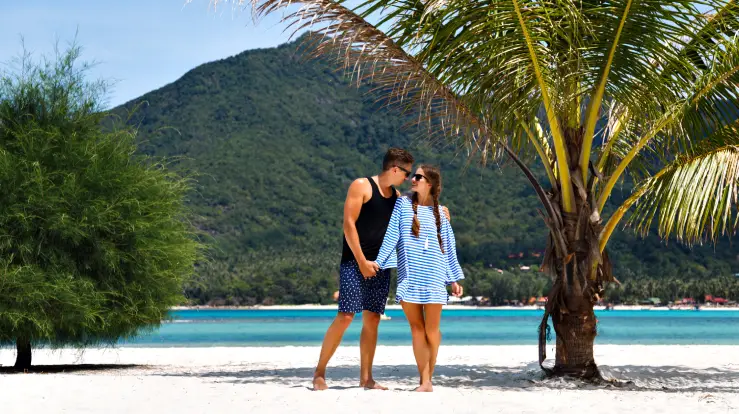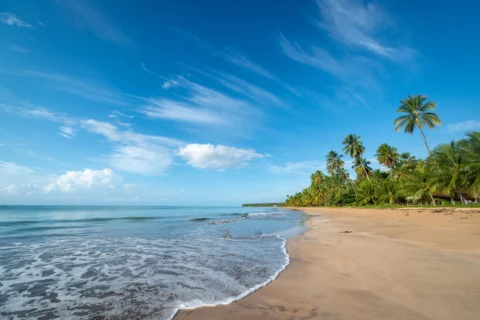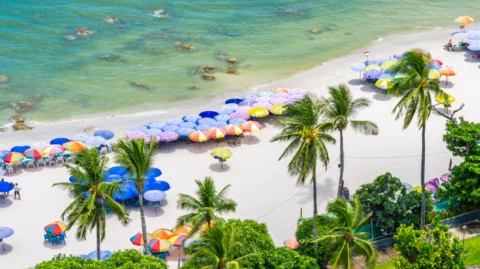Table of Contents
Introduction to Andaman and Nicobar Islands
The Andaman and Nicobar Islands, a union territory of India, are a group of over 500 islands located in the Bay of Bengal. These islands offer a unique blend of natural beauty, rich history and diverse culture, making them an ideal destination for travelers seeking a different experience.
Tourist Places in Andaman and Nicobar Islands
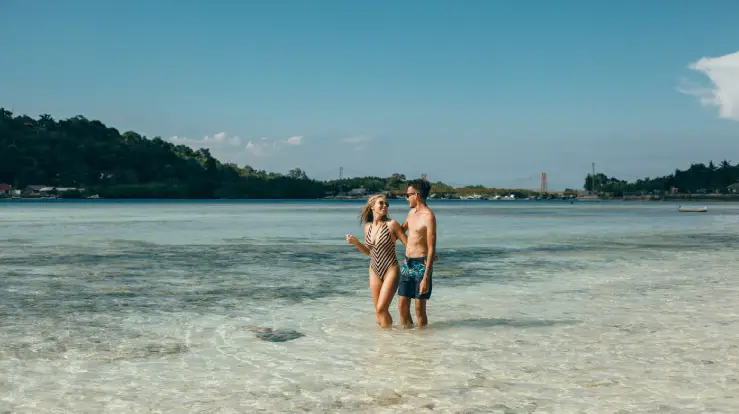
Beaches:
- Radhanagar Beach (Havelock Island): Known for its crystal-clear waters and white sand.
- Elephant Beach (Havelock Island): Famous for snorkeling and diving.
- Kalapathar Beach (Havelock Island): A beautiful beach with panoramic views.
- Corbyn’s Cove Beach (Port Blair): A popular beach with water sports facilities.
- Wandoor Beach (Port Blair): A beautiful beach with beautiful views of the sunset.
Islands:
- Havelock Island: Famous for its beautiful beaches and snorkeling/diving opportunities.
- Neil Island: Known for its beautiful beaches and coral reefs.
- Little Andaman Island: A peaceful island with beautiful beaches and jungles.
- Long Island: A beautiful island with beautiful beaches and jungles.
Historical Places:
- Cellular Jail (Port Blair): A historical jail that has been converted into a museum.
- Ross Island (Port Blair): A historic island with ruins of British-era buildings.
- Viper Island (Port Blair): A historic island that houses a former British prison.
- Barron Island: A volcanic island with a beautiful view.
Wildlife Sanctuaries:
- Mahatma Gandhi Marine National Park (Wandoor): A marine park with coral reefs and diverse marine life.
- Saddle Peak National Park (Diglipur): A national park with diverse flora and fauna.
- Sink Island Wildlife Sanctuary (Sink Island): A sanctuary with coral reefs and diverse marine life.
Other Places:
- Anthropological Museum (Port Blair): A museum showcasing the tribal culture of the islands.
- Samudrika Marine Museum (Port Blair): A museum showcasing the marine life of the islands.
- Chidiya Tapu (Port Blair): A beautiful place with a beautiful view of the sunset.
- Mud Volcano (Baratang Island): A unique mud volcano.
Remember to plan your trip according to the weather and rules and respect the local environment and culture.
Geography and Climate
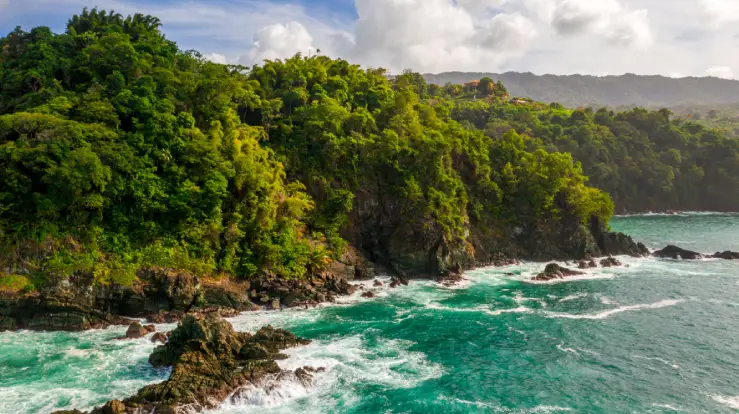
The Andaman and Nicobar Islands are divided into two main groups:
- Andaman Islands
- Nicobar Islands
Located about 1,400 kilometers east of mainland India, these islands enjoy a tropical climate with warm temperatures throughout the year. The islands have two main seasons:
- Dry season (December to May)
- Wet season (June to November)
The unique geography of the islands has shaped their ecosystem and culture over thousands of years.
Rich Biodiversity
The flora and fauna of the Andaman and Nicobar Islands are among the most diverse in India. The islands are home to:
- Dense tropical rainforests
- Mangrove swamps
- Coral reefs
Some of the notable species found on the islands are:
- Dugongs
- Saltwater crocodiles
- Andaman wild boars
- Numerous bird species
The islands’ marine life is equally impressive, with colorful coral reefs and a wide variety of fish. Snorkeling and diving enthusiasts will find plenty to do in the crystal-clear waters surrounding the islands.
Learn more about planning a trip to the waterfalls
Cultural Weft
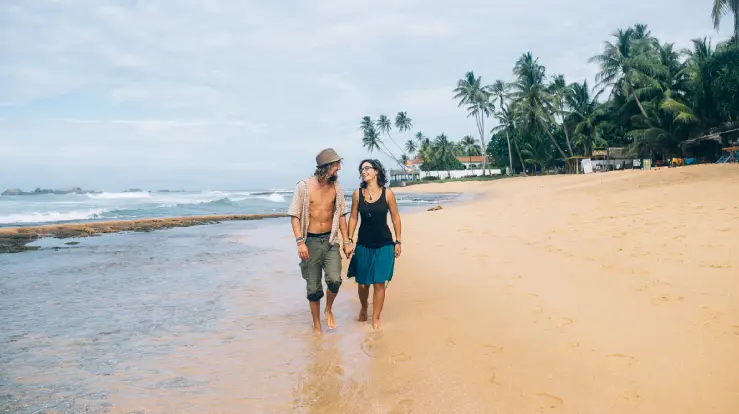
The culture of the Andaman and Nicobar Islands is a unique blend of indigenous tribal traditions and influences from mainland India. The islands are home to several indigenous tribes, including:
- Great Andamanese
- Jarawa
- Onge
- Sentinelese
These tribes have maintained their traditional lifestyle for thousands of years, largely isolated from the outside world.
It is important to note that some of these tribes, especially the Sentinelese, are considered to be among the most dangerous tribes in the Andaman and Nicobar Islands due to their hostility towards outsiders.
The islands also celebrate a variety of festivals throughout the year, reflecting their diverse cultural heritage. Some of the popular festivals include:
- Island Tourism Festival
- Beach Festival
- Subhash Mela
These events showcase the rich cultural traditions of the islands, including music, dance, and handicrafts.
Historical Significance of Andaman Nicobar Islands
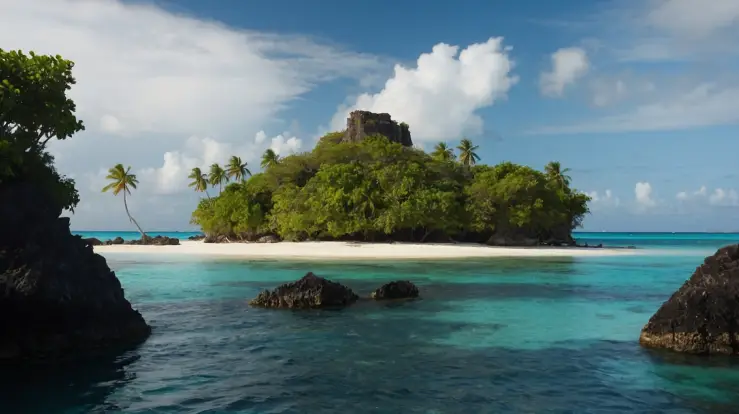
The history of the Andaman and Nicobar Islands is both fascinating and complex. Major historical events include:
- Ancient settlement by indigenous tribes
- British colonization in the 18th century
- Use as a penal colony during India’s freedom struggle
- Japanese occupation during World War II
Visitors can explore this rich history at the following places:
- Cellular Jail in Port Blair
- Ross Island
- Viper Island
These places give an insight into the islands’ colonial past and their role in India’s fight for independence.
Tourist attractions
Tourism in the Andaman and Nicobar Islands has grown significantly in recent years. Some of the popular tourist destinations in the Andaman and Nicobar Islands include:
- Radha Nagar Beach, Havelock Island
- Cellular Jail, Port Blair
- Ross Island
- Mahatma Gandhi Marine National Park
- Baratang Island
- Neil Island
- Mount Harriet National Park
These attractions offer a mix of natural beauty, historical significance, and adventure activities.
Culinary Dishes
The cuisine of the Andaman and Nicobar Islands reflects the diverse influences on the culture of the island. Some of the famous foods of the Andaman and Nicobar Islands include:
- Fresh seafood dishes
- Coconut-based curries
- Tropical fruits
Local specialties that can be tried:
- Fish curry
- Murgh Jahangiri (chicken dish)
- Coconut prawn curry
The cuisine of the islands is characterized by the use of fresh, local ingredients and vibrant flavors.
Flora of Andaman and Nicobar Islands
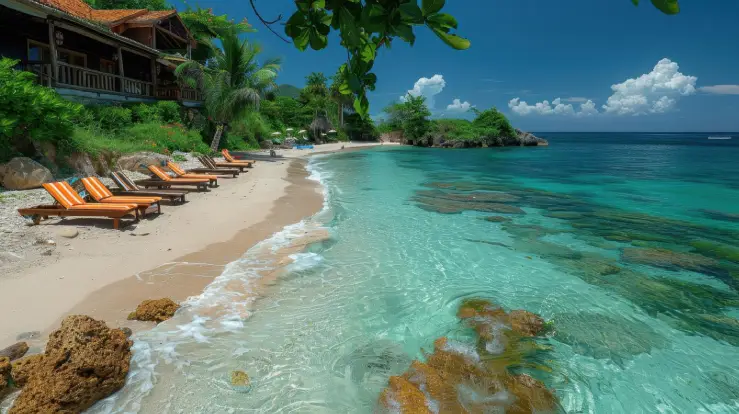
The Andaman and Nicobar Islands are home to unique and diverse flora, consisting of a mix of tropical evergreen and deciduous forests. Some of the notable plant species found in the islands include:
Tropical evergreen forests:
- Dipterocarpaceae (family of trees with two winged seeds)
- Myristicaceae (family of nutmeg trees)
- Sapindaceae (family of soapberry trees)
Deciduous forests:
- Terminalia (family of trees with winged seeds)
- Dillenia (family of trees with large showy flowers)
- Boswellia (family of trees with aromatic resin)
Other notable species:
- Andaman redwood (Pterocarpus dalbergioides)
- Chui (Dipterocarpaceae)
- Coco (Calophyllum inophyllum)
- Padauk (Pterocarpus dalbergioides)
Orchids:
The Andaman and Nicobar Islands are home to more than 100 species of orchids, including are:
- Dendrobium
- Cymbidium
- Paphiopedilum
Mangroves:
The islands have extensive mangrove forests, which consist of the following species:
- Rhizophora mucronata
- Avicennia marina
- Bruguiera gymnorhiza
This is just a glimpse of the rich flora of the Andaman and Nicobar Islands. The unique geographical location and climate of the islands support a wide variety of plants, making it an attractive destination for botanists and nature lovers.
Map of Andaman and Nicobar Islands
Andaman Island Group:
- North Andaman Island
- Middle Andaman Island
- South Andaman Island
- Little Andaman Island
- Baratang Island
- Rutland Island
Nicobar Island Group:
- Car Nicobar Island
- Katchal Island
- Nancowry Island
- Trinket Island
- Camorta Island
- Great Nicobar Island
Other Islands:
- Sentinel Island (restricted area)
- Ross Island
- Havelock Island
- Neil Island
- Long Island
Capital:
- Port Blair (located on South Andaman Island)
Note: This is a simplified map and does not show all the islands and islets that make up the Andaman and Nicobar Islands.
Here is a rough outline of the locations of the islands:
- Andaman group: 10°30’N to 13°30’N latitude
- Nicobar group: 6°45’N to 9°25’N latitude
The Andaman and Nicobar islands are located in the Bay of Bengal, about 1,200 km (750 mi) east of the Indian mainland.
Dangerous Tribes of the Andaman and Nicobar Islands
The Andaman and Nicobar Islands are home to numerous indigenous tribes, some of which have historically been considered “dangerous” due to their isolation, cultural differences, and past conflicts with outsiders. Here are some of the tribes:
1. Sentinelese:
- Inhabit the Sentinel Island
- Known for their hostility towards outsiders
- Have killed many people who came near the island
The Indian government has created a three-mile buffer zone to protect both outsiders and the tribe
2. Jarawa:
- Inhabit the Middle Andaman and South Andaman Islands
- Have a history of conflict with British colonists and Indian authorities
- Now largely confined to a reserve, with limited contact with outsiders
3. Onge:
- Inhabit the Little Andaman Island
- Have a history of conflict with British colonists and Indian authorities
- Now largely confined to a reserve, with limited contact with outsiders
4. Great Andamanese:
- Originally inhabited the Great Andaman Island
- Now largely extinct, with only a few members left
- Have a history of conflict with British colonists and Indian authorities
5. Shompen:
- Residing on Great Nicobar Island
- Outsiders
- Known for their skill in hunting and gathering
It is important to note that the term “dangerous” is often the result of misunderstanding and miscommunication. These tribes have lived in isolation for centuries, and their actions are often the result of protecting their way of life and territory.
The Indian government has taken steps to protect both tribes and outsiders, including creating buffer zones and restricting access to certain areas.
Festivals of Andaman and Nicobar Islands
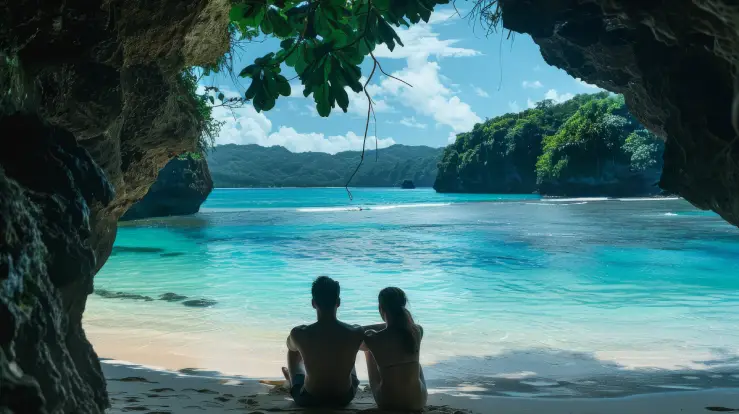
Andaman and Nicobar Islands celebrate a variety of festivals showcasing their rich cultural heritage. Here are some notable festivals:
1. Island Tourism Festival (January)
- A 10-day festival showcasing the culture, music and dance of the islands
- Includes cultural programmes, food stalls and water sports
2. Subhas Mela (January)
- Celebrated in honour of Netaji Subhas Chandra Bose
- Includes cultural programmes, processions and flag hoisting ceremonies
3. Vivekananda Mela (January)
- Celebrated in honour of Swami Vivekananda
- Includes cultural programmes, processions and lectures
4. Republic Day (26 January)
- Celebrated with flag hoisting ceremonies, processions and cultural programmes
5. Beating Retreat Ceremony (29 January)
- A military ceremony marking the end of the Republic Day celebrations
6. Nicobari Festival (February)
- Celebrated by the Nicobari tribe
- Includes traditional dance, music and food
7. Shapuri Festival (March)
- Celebrated by the Shompen tribe
- Includes traditional dance, music and Food Features
8. Good Friday (March/April)
- Celebrated by Christian community
- Features processions, church services and cultural programs
9. Easter Sunday (March/April)
- Celebrated by Christian community
- Features church services, cultural programs and egg decorating competitions
10. Buddha Purnima (May)
- Celebrated by Buddhist community
- Features processions, cultural programs and meditation sessions
11. Independence Day (15 August)
- Celebrated with flag hoisting ceremony, processions and cultural programs
12. Janmashtami (August/September)
- Celebrated by Hindu community
- Features processions, cultural programs and traditional dances
13. Durga Puja (September/October)
- Celebrated by Hindu community
- Features processions, cultural programs and idol immersion ceremonies
14. Diwali (October/November)
- Hindu community Celebrated by
- Features lamp lighting, cultural programs and fireworks
15. Christmas (December)
- Celebrated by the Christian community
Features processions, church services and cultural programs
These festivals showcase the rich cultural diversity of the Andaman and Nicobar Islands, which is a blend of tribal, Hindu, Christian and Buddhist traditions.
Famous Food of Andaman and Nicobar Islands
The Andaman and Nicobar Islands offer a unique blend of seafood, tribal and colonial influences in their cuisine. Here are some of the famous foods:
Seafood:
- Fish curry: A staple dish made from fresh fish, coconut milk and spices.
- Shrimp curry: A delicious curry made from shrimp, coconut milk and spices.
- Crab masala: A spicy dish made from crabs, onions and spices.
- Lobster: A popular seafood that is often served steamed or grilled.
Tribal cuisine:
- Sago: A staple food made from the pulp of the sago palm tree.
- Taro: A root vegetable used in various dishes including curries and stews.
- Pandanus: A leafy vegetable used in tribal cooking.
- Wild boar: A game meat that is often cooked in spicy curries.
Colonial Influences:
- Bengali Cuisine: Influenced by Bengali settlers, dishes like jhol or bhuna are popular.
- South Indian Cuisine: Influenced by South Indian settlers, dishes like idli and dosa are popular.
Local Specialties:
- Coconut Water: Fresh coconut water is widely available and refreshing.
- Coconut: A popular snack, coconut is widely available.
- Pani Kalkal: A sweet dish made from palm sugar, coconut milk, and rice flour.
- Andaman Nicobar Cuisine: Such as “maacher jhol” (fish curry), “bhuna” (meat curry), and “pulao” (mixed rice).
Fruits:
- Coconut: Widely available and used in various dishes.
- Pandanus Fruit: A tropical fruit used in tribal cooking.
- Mango: A popular fruit widely available during the season.
- Jackfruit: A tropical fruit used in various dishes.
Don’t forget to try the local cuisine during your trip to experience the unique flavors of the Andaman and Nicobar Islands!
Best Time to Visit
The best time to visit the Andaman and Nicobar Islands is the dry season from October to May. This period has:
- Pleasant weather
- Clear skies
- Calm seas ideal for water activities
However, the islands can be visited all year round, with each season offering its own distinct experience.
Planning Your Trip
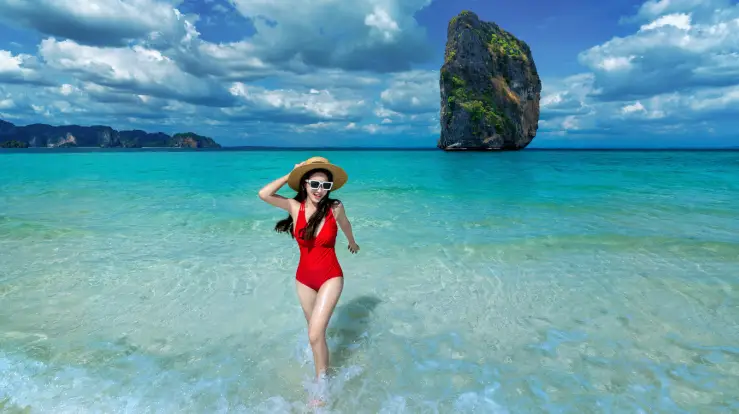
When planning your trip to Andaman and Nicobar Islands, consider the following:
- Get the necessary permits: Some areas require special permission to visit.
- Choose your islands: Decide which islands you want to visit based on your interests.
- Book accommodation in advance: Options range from luxury resorts to budget guesthouses.
- Plan your activities: Whether it is snorkeling, hiking or historical tours, book in advance.
- Respect local customs: Take care of the indigenous tribes and their territories.
Many tour operators offer Andaman and Nicobar Islands packages that can simplify your planning process.
Learn more about planning a trip to romantic places for couples
Conclusion
Exploring the Andaman and Nicobar Islands offers a unique opportunity to experience India’s tropical paradise. From pristine beaches and diverse wildlife to rich cultural heritage and historical sites, these islands have something for every traveler. Whether you’re looking for adventure, relaxation or cultural immersion, the Andaman and Nicobar Islands promise an unforgettable trip.
Learn more about Andaman and Nicobar Islands tourism
Don’t forget to respect the local environment and communities during your trip, so that this beautiful destination is preserved for the enjoyment of future generations.
FAQs
How much will an Andaman trip cost?
The cost of a trip to Andaman varies depending on the duration, accommodation, and activities. However, here is a rough estimate:
5-night trip: ₹25,000 – ₹50,000 per person (approx.)
7-night trip: ₹40,000 – ₹80,000 per person (approx.)
What is the best time to visit Andaman?
The best time to visit Andaman is from October to May, while the peak season is from December to April.
Why Andaman is better than Goa?
Andaman offers a more calm, peaceful, and untouched experience than Goa. It is ideal for nature lovers and those looking for an isolated place.
Is a passport required for Andaman?
No, Indian citizens do not require a passport to visit Andaman. However, you will need a valid identity card and permission from the authorities to visit some of the islands.
What is special about Andaman?
Andaman is known for:
Beautiful beaches
Crystal-clear waters
Coral reefs
Unique wildlife
Colonial history
Indigenous tribes
What are the few lines about Andaman and Nicobar Island?
Andaman and Nicobar Islands are a union territory of India, consisting of 572 islands in the Bay of Bengal. They are known for their stunning natural beauty, diverse wildlife, and rich cultural heritage.
Why Andaman and Nicobar Islands are famous?
These islands are famous for their:
Beautiful beaches and coral reefs
Unique wildlife, including sea turtles and saltwater crocodiles
Colonial history and architecture
Indigenous tribes, such as the Jarawa and the Sentinelese
What is the description of the Andaman Islands?
The Andaman Islands are a group of islands in the Bay of Bengal, known for:
Lush forests
Nice beaches
Clear waters
Coral reefs
Unique wildlife
Which month is best to visit Andaman?
December is considered the best month to visit Andaman as the weather is pleasant and rainfall is less during this month.
How much does a trip to Andaman cost?
The cost of a trip to Andaman varies depending on the duration, accommodation, and activities. However, here is a rough estimate:
5-night trip: ₹25,000 – ₹50,000 per person (approx.)
7-night trip: ₹40,000 – ₹80,000 per person (approx.)
Is Andaman Nicobar open for tourism?
Yes, Andaman and Nicobar islands are open for tourism but with certain restrictions and guidelines to preserve the unique environment and indigenous tribes of the island.
